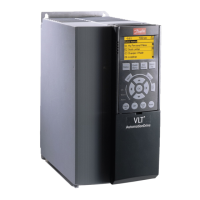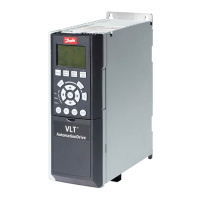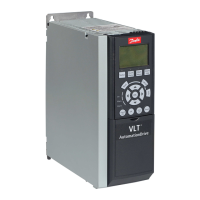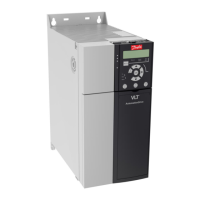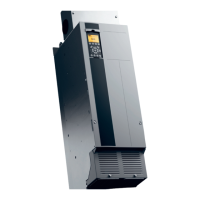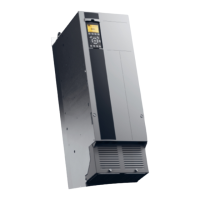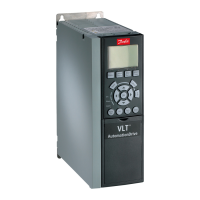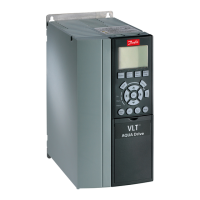Function Parameter Setting
Set min. speed limits
Set motor speed max. limit
Set max. output frequency
4-11 Motor
Speed Low
Limit [RPM]
4-13 Motor
Speed High
Limit [RPM]
4-19 Max
Output
Frequency
300 RPM
1500 RPM
60 Hz
Set S201 or S202 to wanted analog input function (Voltage (V) or current (I))
NOTE! Switches are sensitive - Make a power cycling keeping default setting of V
5) Scale analog inputs used for reference and feedback
Set terminal 53 low voltage
Set terminal 53 high voltage
Set terminal 54 low feedback value
Set terminal 54 high feedback value
Set feedback source
6-10 Terminal
53 Low Voltage
6-25 Terminal
54 High Ref./
Feedb. Value
7-20 Process CL
Feedback 1
Resource
0 V
10 V
-5 °C
35 °C
[2] Analog input 54
6) Basic PID settings
Process PID Normal/Inverse 7-30 Process
PID Normal/
Inverse Control
[0] Normal
Process PID Anti Wind-up 7-31 Process
PID Anti
Windup
[1] On
Process PID start speed 7-32 Process
PID Start Speed
300 RPM
Save parameters to LCP 0-50 LCP Copy
[1] All to LCP
Table 3.9 Example of Process PID Control set-up
3.4.4
Optimisation of the Process Regulator
The basic settings have now been made; all that needs to
be done is to optimise the proportional gain, the
integration time and the differentiation time (7-33 Process
PID Proportional Gain, 7-34 Process PID Integral Time,
7-35 Process PID Differentiation Time). In most processes,
this can be done by following the guidelines given below.
1. Start the motor
2.
Set 7-33 Process PID Proportional Gain to 0.3 and
increase it until the feedback signal again begins
to vary continuously. Then reduce the value until
the feedback signal has stabilised. Now lower the
proportional gain by 40-60%.
3.
Set 7-34 Process PID Integral Time to 20 s and
reduce the value until the feedback signal again
begins to vary continuously. Increase the
integration time until the feedback signal
stabilises, followed by an increase of 15-50%.
4.
Only use 7-35 Process PID Differentiation Time for
very fast-acting systems only (differentiation
time). The typical value is four times the set
integration time. The differentiator should only be
used when the setting of the proportional gain
and the integration time has been fully
optimised. Make sure that oscillations on the
feedback signal is sufficiently dampened by the
lowpass filter on the feedback signal.
NOTE
If necessary, start/stop can be activated a number of times
in order to provoke a variation of the feedback signal.
3.4.5 Ziegler Nichols Tuning Method
To tune the PID controls of the frequency converter,
several tuning methods can be used. One approach is to
use a technique which was developed in the 1950s but
which has stood the test of time and is still used today.
Introduction
VLT
®
AutomationDrive FC 300 Design Guide, 0.25-75 kW
36 MG33BE02 - VLT
®
is a registered Danfoss trademark
3
3
http://www.RSPSupply.com/p-21462-Danfoss-131B8966-VLT-Automation-VT-Drive-VFD-FC301-230V-5-HP.aspx

